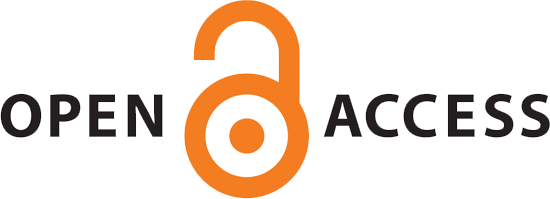The Role of BIS Monitoring in Reducing Postoperative Cognitive Dysfunction
Abstract
Background: Postoperative cognitive dysfunction (POCD) is a relatively common and troubling issue, especially in older adults undergoing surgery. Bispectral index (BIS) monitoring enables anesthesiologists to assess anesthetic depth in real time and adjust dosing accordingly. In this article, we summarize the current evidence on BIS-guided anesthesia in reducing the incidence and severity of POCD in adult surgical patients.
Methods: A structured search was conducted in PubMed and Scopus databases to identify randomized controlled trials, observational studies, and meta-analyses published between 2000 and 2024.
Results: Clinical trials and meta-analyses suggest that BIS monitoring reduces anesthetic exposure, shortens recovery time, and is associated with lower POCD rates. Mechanisms may include optimized drug titration, improved hemodynamic control, and reduced neuroinflammation.
Conclusion: BIS monitoring may represent an effective approach to mitigate POCD, especially in high-risk patients. Further large-scale trials are needed to confirm these findings and refine guidelines.
[2] Punjasawadwong Y, Phongchiewboon A, Bunchungmongkol N. Bispectral index for improving anaesthetic delivery and postoperative recovery. Cochrane Database Syst Rev. 2014;2014(6):CD003843.
[3] Chen X, Li L, Yang L, Li A, Wu M, Yu D. A randomized trial: bispectral-guided anesthesia decreases incidence of delayed neurocognitive recovery and postoperative neurocognitive disorder but not postoperative delirium. Am J Transl Res. 2022;14(3):2081-2091.
[4] Steinmetz J, Christensen KB, Lund T, Lohse N, Rasmussen LS; ISPOCD Group. Long-term consequences of postoperative cognitive dysfunction. Anesthesiology. 2009; 110(3):548-55.
[5] Nienhaus L.M. Risikofaktoren der postoperativen kognitiven Dysfunktion nach nicht-kardiochirurgischen Operationen [dissertation]. Münster: Universität Münster; 2018.
[6] Terrando N, Eriksson LI, Ryu JK, Yang T, Monaco C, Feldmann M, et al. Resolving postoperative neuroinflammation and cognitive decline. Ann Neurol. 2011;70(6):986-995.
[7] Rampil IJ. A primer for EEG signal processing in anesthesia. Anesthesiology. 1998;89(4):980-1002.
[8] Su X, Meng ZT, Wu XH, Cui F, Li HL, Wang DX, et al. Dexmedetomidine for prevention of delirium in elderly patients after non-cardiac surgery: a randomised, double-blind, placebo-controlled trial. Lancet. 2016;388(10054):1893-1902.
[9] Mandal PK, Saharan S, Penna O, Fodale V. Anesthesia Issues in Central Nervous System Disorders. Curr Aging Sci. 2016;9(2):116-43.
[10] Hudetz JA, Iqbal Z, Gandhi SD, Patterson KM, Byrne AJ, Hudetz AG, Pagel PS, Warltier DC. Ketamine attenuates post-operative cognitive dysfunction after cardiac surgery. Acta Anaesthesiol Scand. 2009; 53(7):864-72.
[11] Evered L, Silbert B, Knopman DS, Scott DA, DeKosky ST, Rasmussen LS, et al. Recommendations for the nomenclature of cognitive change associated with anaesthesia and surgery—2018. Br J Anaesth. 2018; 121(5):1005-1012.
[12] Hillen J. Ein Vergleich der Inhalationsanästhetika Xenon und Desfluran bezüglich der Inzidenz der postoperativen kognitiven Dysfunktionen (POCD) im Alter [dissertation]. Aachen: Technische Hochschule Aachen; 2013.
[13] Figueroa S, Levionnois OL, Mirra A. Quantitative Variables Derived from the Electroencephalographic Signal to Assess Depth of Anaesthesia in Animals: A Narrative Review. Animals (Basel). 2025;15(15):2285.
[14] Shi M, Long Y, Zhou Z, Huang L, Wu D, Zhang X. The Impact of Anesthetic Management Under Bispectral Index Monitoring on the Early Recovery Quality of Elderly Patients Undergoing Laparoscopic Surgery: A Blinded Randomized Controlled Trial. Clin Interv Aging. 2025; 20:597-612.
[15] Chew WZ, Teoh WY, Sivanesan N, Loh PS, Shariffuddin II, Ti LK, et al. Bispectral Index (BIS) Monitoring and Postoperative Delirium in Elderly Patients Undergoing Surgery: A Systematic Review and Meta-Analysis With Trial Sequential Analysis. J Cardiothorac Vasc Anesth. 2022;36(12):4449-4459.
[16] Avidan MS, Jacobsohn E, Glick D, Burnside BA, Zhang L, Villafranca A, et al. Prevention of intraoperative awareness in a high-risk surgical population. N Engl J Med. 2011;365(7):591-600.
[17] Shi X, Chen X, Ni J, Zhang Y, Liu H, Xu C, et al. Systematic review and meta-analysis of the prognostic value of Narcotrend monitoring of different depths of anesthesia and different Bispectral Index (BIS) values for cognitive dysfunction after tumor surgery in elderly patients. Ann Transl Med. 2022;10(4):186.
[18] Myles PS, Leslie K, McNeil J, Forbes A, Chan MT. Bispectral index monitoring to prevent awareness during anaesthesia: the B-Aware randomised controlled trial. Lancet. 2004;363(9423):1757-63.
[19] Cascella M. Mechanisms underlying brain monitoring during anesthesia: limitations, possible improvements, and perspectives. Korean J Anesthesiol. 2016;69(2):113-20.
[20] Huang Y, Huang L, Xu J, Bao Y, Qu Y, Huang Y. Bispectral Index Monitoring Effect on Delirium Occurrence and Nursing Quality Improvement in Post-anesthesia Care Unit Patients Recovering From General Anesthesia: A Randomized Controlled Trial. Cureus. 2024;16(8):e66348.
| Files | ||
| Issue | Article in Press |
|
| Section | Review Article(s) | |
| Keywords | ||
| Postoperative cognitive dysfunction Bispectral index anesthetic depth | ||
| Rights and permissions | |

|
This work is licensed under a Creative Commons Attribution-NonCommercial 4.0 International License. |




